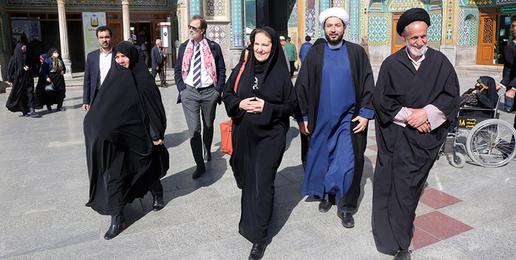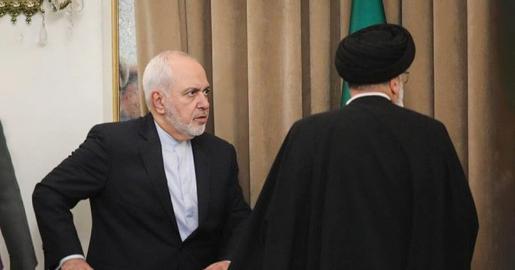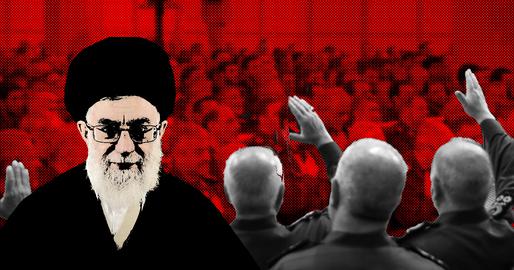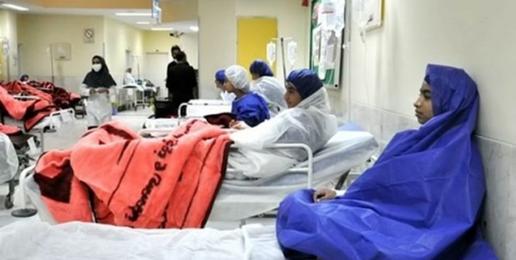The head-to-toe black outfit worn by the Swiss envoy to Tehran during her visit to a Shia shrine this week has sparked outrage both inside and outside Iran, as the country has been swept by five months of nationwide protests demanding more freedoms and women’s rights.
The Iranian authorities have unleashed a brutal crackdown on the anti-government protest movement, killing more than 520 people and illegally detaining over 19,000, activists say. Following biased trials, the judiciary has handed down stiff sentences, including the death penalty, to protesters.
Hard-line Iranian media widely published photos showing Swiss Ambassador Nadine Olivieri Lozano meeting clerics in the central city of Qom on February 22. She was wearing a long black veil that covered her head and the rest of her body.
According to Iranian media, Olivieri Lozano’s visit was intended to familiarize herself with the Islamic culture, art and architecture of the shrine.
Kijan Espahangizi is a Swiss-Iranian historian at the University of Zurich and a member of the Free Iran Switzerland solidarity collective. He tells IranWire that the outcry caused by the pictures of Olivieri Lozano has been very strong among Swiss-Iranians.
Espahangizi says articles in the Swiss press questioned the ambassador’s outfit choice, suggesting it revealed a false understanding of Switzerland’s neutrality and disrespect for the popular protests in Iran.
“We are shocked by these pictures because the ambassador was not wearing only a headscarf but a long, black veil. Everybody who knows Iran knows that even small differences in the headscarf have a meaning. For us it’s very clear that either the ambassador has no knowledge of these differences, and it would be total incompetence, or they did it deliberately, which would mean a disinterest in the developments taking place in Iran or that they are supporting the narrative of the regime that wants to legitimize its Islamist theocracy in the eyes of world.”
Darya Safai, an Iranian-Belgian member of Belgium’s parliament, tweeted, "While millions of Iranian women are fighting for women's rights and knowing that thousands have been killed for it, she wears a hijab and makes publicity for the oppressors."
"Disgusting," she added.
Human rights lawyer Hillel Neuer said Olivieri Lozano had become a “star of the murderous regime's propaganda.”
"While women in Iran are being beaten, blinded, tortured, raped and killed for daring to protest the compulsory hijab laws, she is complicit in her head-to-toe chador and hijab," Neuer tweeted.
Switzerland’s Federal Department of Foreign Affairs sent an e-mail to IranWire explaining that the ambassador visited “an academic institution that works in the field of interreligious dialogue and enables its students to take part in interreligious seminars in Switzerland.”
“When visiting the religious site, the applicable clothing protocol for women was observed,” the message said, adding that Switzerland “has repeatedly and unequivocally condemned the use of force against the demonstrators at various levels and also called on the Iranian authorities to choose the path of de-escalation and to seek dialogue with the demonstrators.”
All women in Iran must conceal their hair with a headscarf, or hijab, while in public and wear loose fitting trousers under their coats.
But a growing number of women, including celebrities, have appeared in public without head coverings since the September death of 22-year-old Mahsa Amini in the custody of morality police triggered the widespread protests. Amini had been arrested for allegedly wearing a hijab improperly.
Espahangizi says the outfit worn by the Swiss envoy in Qom “fits into the picture of how the Swiss government is handling the situation since September.”
“It tries not to do anything that could anger the Islamic regime and they always say they want to be able to have a human rights dialogue and that they want to maintain bridges. Still, in September 2022, the then president of the Swiss Confederation, Ignazio Cassis, met with the president of the Islamic regime Ebrahim Raisi.”
Espahangizi also points out that the new Swiss president, Alain Berset, sent a congratulatory message in February on the occasion of the National Day of the Islamic Republic.
As a neutral country, Switzerland has acted as a mediator between Iran and the United States, which haven’t had diplomatic relations since 1980, and has helped Iran gain access to various organizations such as the World Trade Organization (WTO).
“Iran needs Switzerland as a possible channel of communication with the US, it’s not the other way around. So, Switzerland would be in a position to clearly protest what’s happening in Iran. There’s no reason why they should be engaging in what they call "inter-religious dialogue". There is no dialogue, and the overwhelming majority of the Iranian people don’t want dialogue with murderers, with an Islamo-fascist regime."
visit the accountability section
In this section of Iran Wire, you can contact the officials and launch your campaign for various problems

























comments